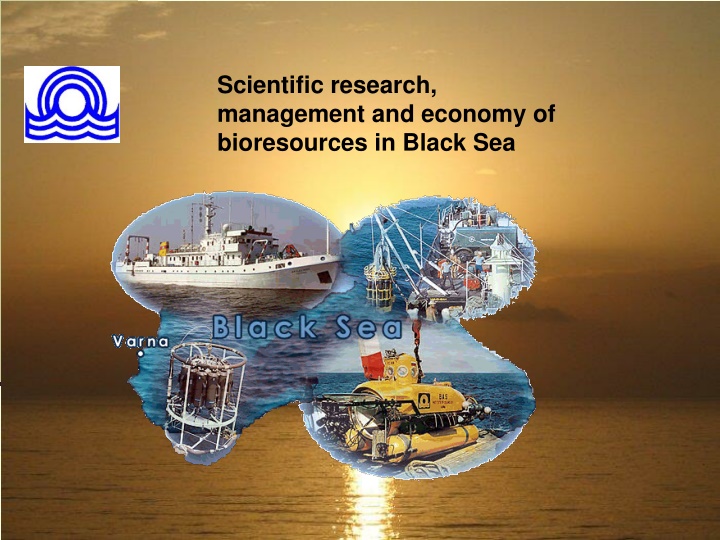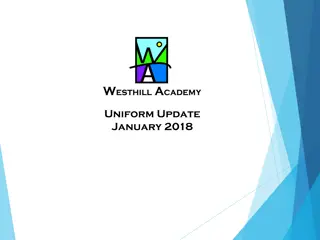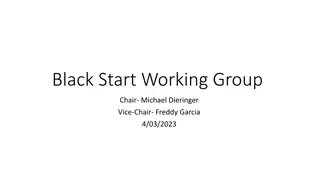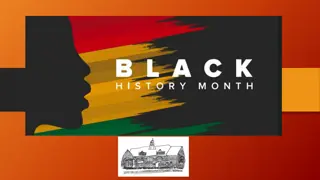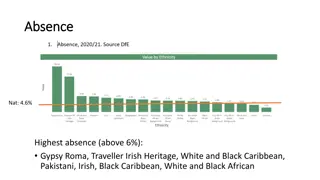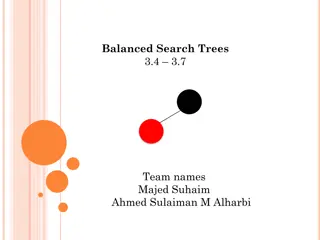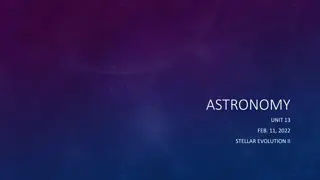Scientific Research, Management, and Economy of Bioresources in the Black Sea
This paper delves into the scientific research, management, and economy of bioresources in the Black Sea region. It aims to analyze the fisheries, highlight gaps in resource management, propose solutions, and discuss the dynamics of open access fishery stocks such as sprat, whiting, red mullet, and turbot. The material covers data on small-scale fisheries in Bulgarian waters in 2013, and emphasizes the importance of sustainable management for marine living resources in the Black Sea from a global bioeconomy perspective.
Download Presentation

Please find below an Image/Link to download the presentation.
The content on the website is provided AS IS for your information and personal use only. It may not be sold, licensed, or shared on other websites without obtaining consent from the author.If you encounter any issues during the download, it is possible that the publisher has removed the file from their server.
You are allowed to download the files provided on this website for personal or commercial use, subject to the condition that they are used lawfully. All files are the property of their respective owners.
The content on the website is provided AS IS for your information and personal use only. It may not be sold, licensed, or shared on other websites without obtaining consent from the author.
E N D
Presentation Transcript
Scientific research, management and economy of bioresources in Black Sea
Aims and Background To describe the fisheries in the Black Sea and management instruments To describe the major gaps in resource management and exploitation of the resources To demonstrate the open access fisheries scenarios To clarify problems and to propose solutions
Material and method Case study: Bulgarian waters
Data refers to: 2013 Total (all fisheries) Small-scale fisheries1 Fleet Number of vessels Capacity (GT) Number of fishers % women Average age of fishers Landings Quantity (ton) Value (currency ?) Most common gear used (top 3) (% in total) 2043 6587 1949 1584,5 1 n.a. n.a. Towed gears (59%), gill nets (24%), traps (10%), Hook and lines (55%) Gill nets (35%), traps (10%) Most important species in landings: Top 3 in quantities (% in total) Rapa whelk (25%), Sprat (23%), red mullet (14%) Gobies (22%), turbot (16%), horse mackerel (10%) Turbot (25%), gobies (18%), horse mackerel (12%) Top 3 in values (% in total) Rapa whelk (31%), turbot (33%), sprat (22%)
The 2ndUNIDOKAP International Symposium on BIODIVERSITY, 28-30 November 2018,Samsun, TURKEY Spatial distribution of ISF (1) and prey number (2) Distribution of sprat biomass - trawl surveys data CPUA (kg/km2): December 2016 scattered distribution CPUE (kg/h): May - June 2009 (close to the shore) ( 2 ) Spri ng (1) Autum n
Objective: The present paper tends to describe the dynamics in open access fishery of four (sprat, whiting, red mullet and turbot) stocks with assessed stock biomass and fishing mortality coefficients.
Plan Black Sea marine living resources Management of MLR in Black Sea Bioeconomy global perspective Fish = money bioeconomy scenarios Problems Possible solutions
Intro: Bioeconomy global perspective H.S. Gordon The economic theory of a common property resource the fishery J. Polit. Econ., 63 (1954), pp. 116 124 Reference paper in natural resource economics input-demand based model to lay out the cause, the process, and the consequences of overexploitation of fisheries resources.
Fisheries biology and economy Fisheries dependant on effort,demands,common property resources, equilibrium; open-access and hence faces a free entry- exit procedure The entry/exit dynamics are linear to the profitability of the fishery, with increasing fishing mortality when economic rent (resource rent) is positive and decreasing fishing mortality when rent is negative.
Optimal allocation of renewable resources: Completely specified in terms of the rights that accompany the property over the resource, the restrictions over those rights, and the penalties corresponding to their violation. Exclusive, so that the person who has those rights will also be responsible for any resource, the and penalties corresponding to the use of the natural resource.
Transferable, in order to have those rights in the hands of those who have the capability to convey them to the highest use value. Effectively enforced, because a non-policed right becomes an empty right.
Management of fisheries resources in Black Sea TACs and quotas for sprat in EU waters 15 April to 15 June prohibition in EU waters TACs and quotas for turbot in EU waters 3442, 49 t Bulgaria Bulgaria 8032, 5 t Romania 47 t 47 t Turkey Minimum conservation size (45 cm) for turbot and a minimum mesh size (400 mm) for gillnets (GFCM) Turkey and Georgia no TAC Ukraine/Ru ssian Federation 70 000 t. Georgia 60 th.tons Anchovy quota Turkey- area closures, time closures, mesh size limits, minimum legal catch size
Property regimes, property rights and externalities state property. private property common property (res communis) In open access (res nullius) - no property; Stock externalities. Negative effects.
Crowding externalities Technological externalities Sequential externalities Incidental externalities Turbot by catch in sprat OTM
Ecologically based externalities externality under competitive coexistence : Predator prey externality by competitive release fleet A diminish the dominant species, allow to fleet B to catch subordinated species Trophic-based externalities
Experimental Analysis of catch in Black Sea Fishing effort Bioeconomic modeling scenarios: Bioeconomics of a Discrete Ricker Model with Delayed Recruitment Quasi-Rent in Open Access Fisheries The Backward-Bending Supply Function in Fisheries
RESULTS and DISCUSSION Problems to discuss: Lack of common management Lack of management plans Overexploitation and eutrophication Unknown state of the resources Lack of bio-economic analyses Loss of revenue Unsustainable development
The concept of "economic rent" is a subset of factor markets that helps explain why some factors of production receive more income than others. Economic rent applies not just to land but to any scarce resource. Increase of income from fishery = economic rent
Open access equilibrium long-term fish catch supply backward-bending supply curve (blue) equilibrium catch (green curve) X price function represented by the light blue demand curve = total revenue from fishery The intersection of the red revenue curve and the magenta cost curve represents the open access equilibrium of this fishery. The connecting dashed line from this point to the green catch curve and the demand and supply curves in the upper figure gives the static solution of this parameter set.
Quasi-Rent in Open Access Fisheries Development of rent and effort = quasi-rent "Quasi-Rent in Open Access Fisheries" from the Wolfram Demonstrations Project http://demonstrations.wolfram .com/QuasiRentInOpenAcces sFisheries/ Contributed by: Arne Eide http://demonstrations.wolfram.com/QuasiRentInOpenAcce ssFisheries/ Arne Eide
Bioeconomics of a Discrete Ricker Model with Delayed Recruitment The natural equilibrium or stable focus (when fishing mortality is zero) is shown by the intersection of the two dashed lines.
Fisheries management plans Evaluate the fishery in biological, ecological and economic sense. Identify and quantify the objectives and goals of management Select the appropriate combination of performance variables, both biological and economic, and determine the control variables that allow achieving the desired levels in fishery performance criteria.
Determine alternative management strategies and their mechanisms of implementation, in order to make operative the control variables previously defined. (a) carefully specify the fishery system and the context in which the model is intended to operate; (b) elaborate a causal diagram with the recognized fishery subsystems and the corresponding interface variables; (c) build a block diagram to quantitatively define model subsystems and interactions among them, as well as exogenous and policy variables and their impact upon the system. Monitor the fishery to evaluate the impacts of alternative management strategies included in the management plan. Reevaluate periodically the fishery
Problems the absence of resource ownership, or ill- defined property rights. excessive entry inefficient spatial distribution of effort, resource degradation, and the dissipation of potential rents in fisheries. Open access fishery - too many boats chasing too few fish. equilibrium patterns of biomass and effort across the system to be dependent upon bioeconomic conditions
Possible solutions Establish rights on the resources Individual transferable quotas (ITQs) whereby fishermen hold a right to a share of a biologically determined total allowable catch (TAC). community development quotas and harvester cooperatives - Better solution Encourage aquaculture development Capacity building - culture to use marine resources
Fish = Money Fisheries demand revenue employment Ecology stable equilibrium healthy environment
Conclusions In the Black Sea, for the analyzed fish stocks the fishing mortality increasing for the period of last 10 years, as the open access to the fishery together with lack of comprehensive fisheries management in the whole basin impose a need for common governance system introduction. However, changing commercial marine living resources is not simply one of resource fluctuations, together with their associated socio-economic There are huge implications for marine ecology, biodiversity and the ability of the Sea to process the nutrient/pollutant loads which it receives. the problem of consequences.
